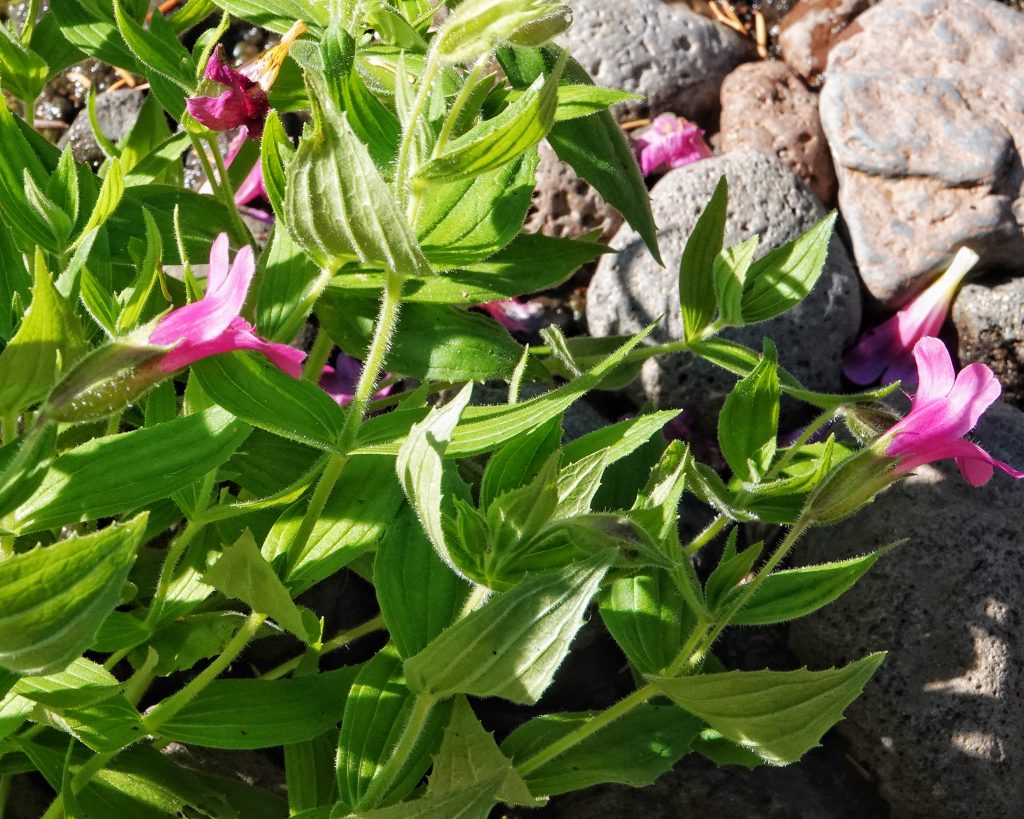
I’m going to take a brief break from talking about conifers in my plant posts, to address one of my favorite wildflowers, which has been languishing in my photos (possibly because they are not one of my greater photographic successes) since I found it on the same trip that got me jazzed up about conifers. They say that Erythranthe lewisii (formerly Mimulus lewisii, commonly known as Lewis’ monkeyflower, great purple monkey-flower, or pink monkey flower) also grows in wet meadows, but all of the ones I’ve found were growing amid streamside cobblestones (or even within the stream itself) and temporary islands of shrinking watercourses, bright spots of green contrasting sharply with the dull, light grey of the rocks, and those bold, fabulous purple (magenta? hot pink?) flowers filling more visual space than anything only an inch and a half long can possibly occupy. And then there is the delicate, exquisite shading of light pink to yellow in the throat…
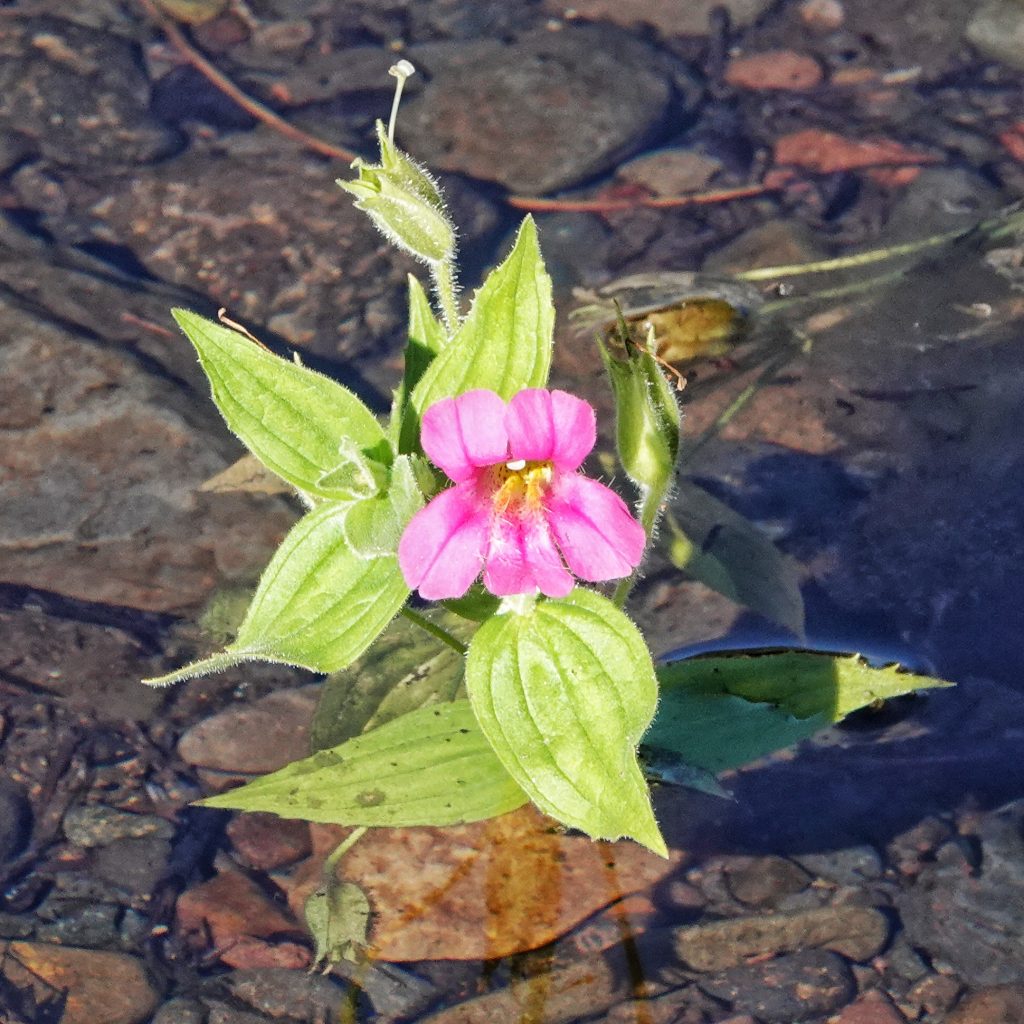
I don’t remember ever seeing any of these little jewels in a prosaic setting. I only find them in wild country, up in the mountains where the signs of human encroachment are limited to the occasional road, fire pit, or ancient aluminum can, although I’m sure they also occur in more heavily trafficked locations. The thing that really strikes me about their beauty, in locations where even a twig on a willow is beautiful because it is a perfect expression of that organism in that precise time and place, is that these perennial plants are probably under water for more of their lives than they are above it. But as soon as they are exposed to air and light they burst into growth, culminating in these wonderful flowers that call to the bees who fertilize them and are rewarded with nourishment, and that bring such joy to those with eyes that can appreciate them. I realize that many of these observations apply to a wide range of plants and locations. But the thing is, Lewis’ monkeyflowers somehow make me effortlessly cognizant of them in a way that many of the others simply do not.
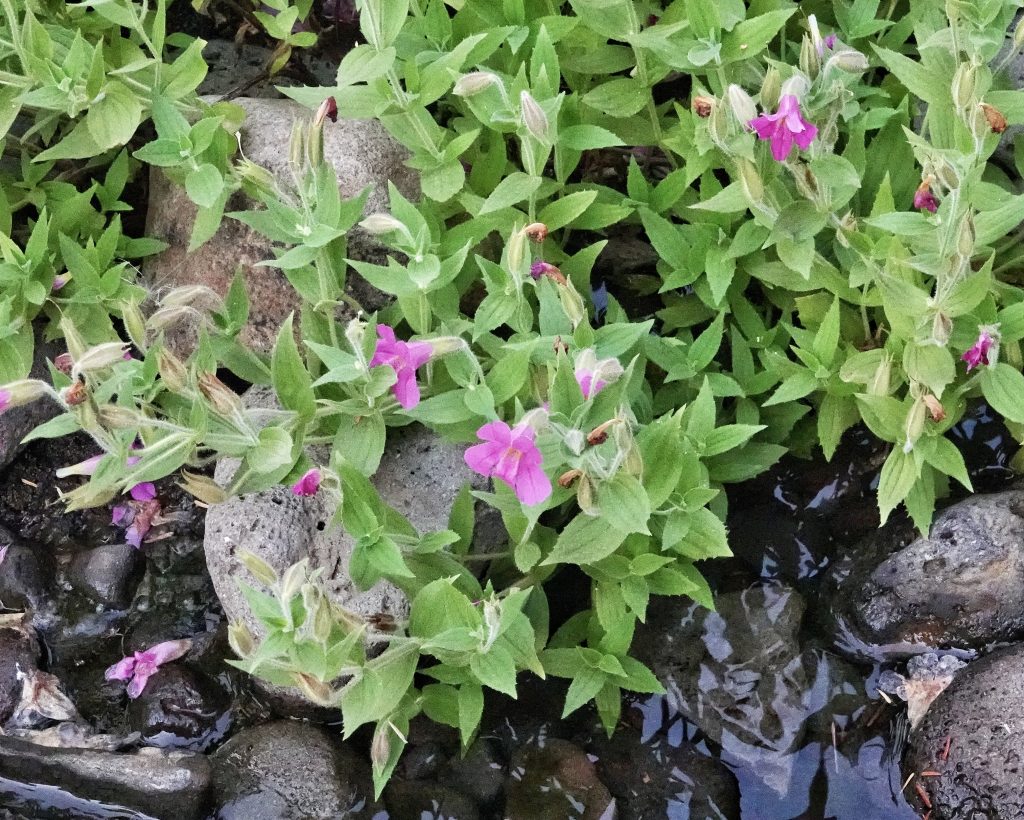
Though some monkeyflowers were used as food and/or medicine by indigenous people, Erythranthe lewisii does not appear to be one of them. This species (and many others) were for many years placed in the genus Mimulus in the family Scrophulariaceae, but the taxonomists have come to the conclusion that it fits better in the genus Erythranthe in the family Phrymaceae. This may be the last word on the subject, but it is probably not. Evolution has always been an ongoing and messy process, and it will always resist our attempts to impose order upon it.
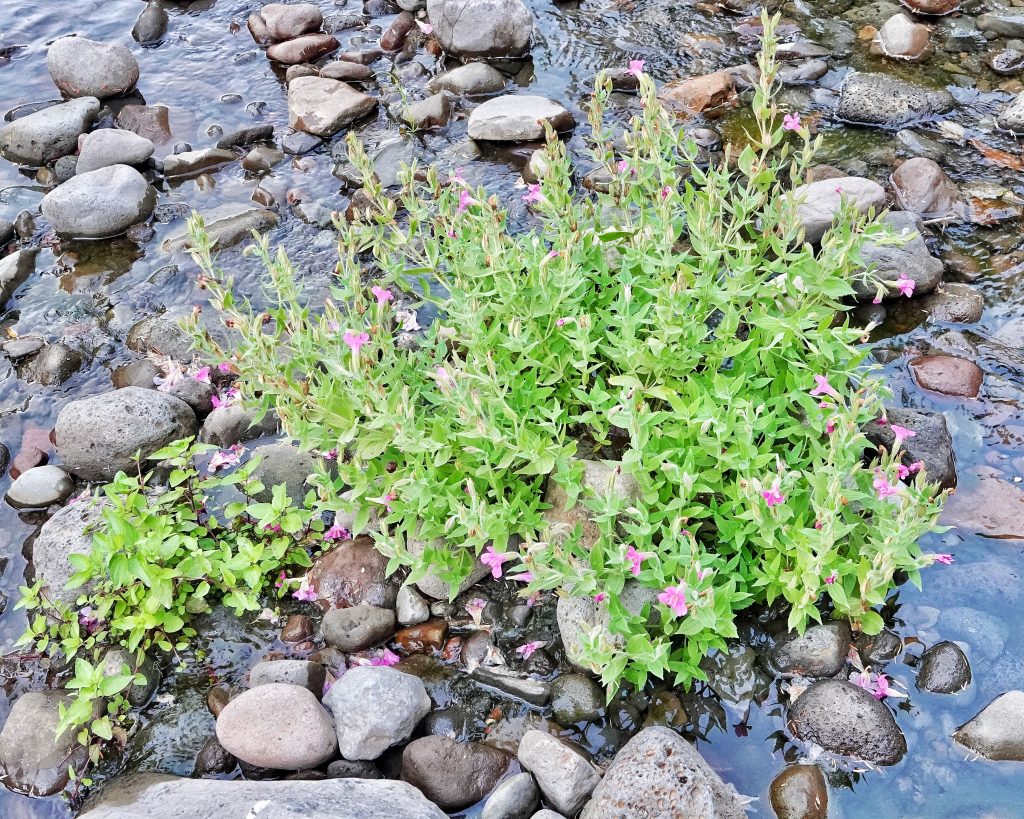
Description– Medium sized (may be up to 4’ high, but usually 2’ or less) plant that grows in clusters and low mounds, with 1-3” long, oblong, pointed leaves that may or may not have toothed margins, and 15-50mm wide, pink to magenta or purple flowers; leaves are clasping and palmately veined; flowers on a pedicel that is longer than the calyx, form a tube, with 5 spreading but not reflexed lobes, anthers and stigmas not exserted, and white or pale pink shading into yellow in the throat.
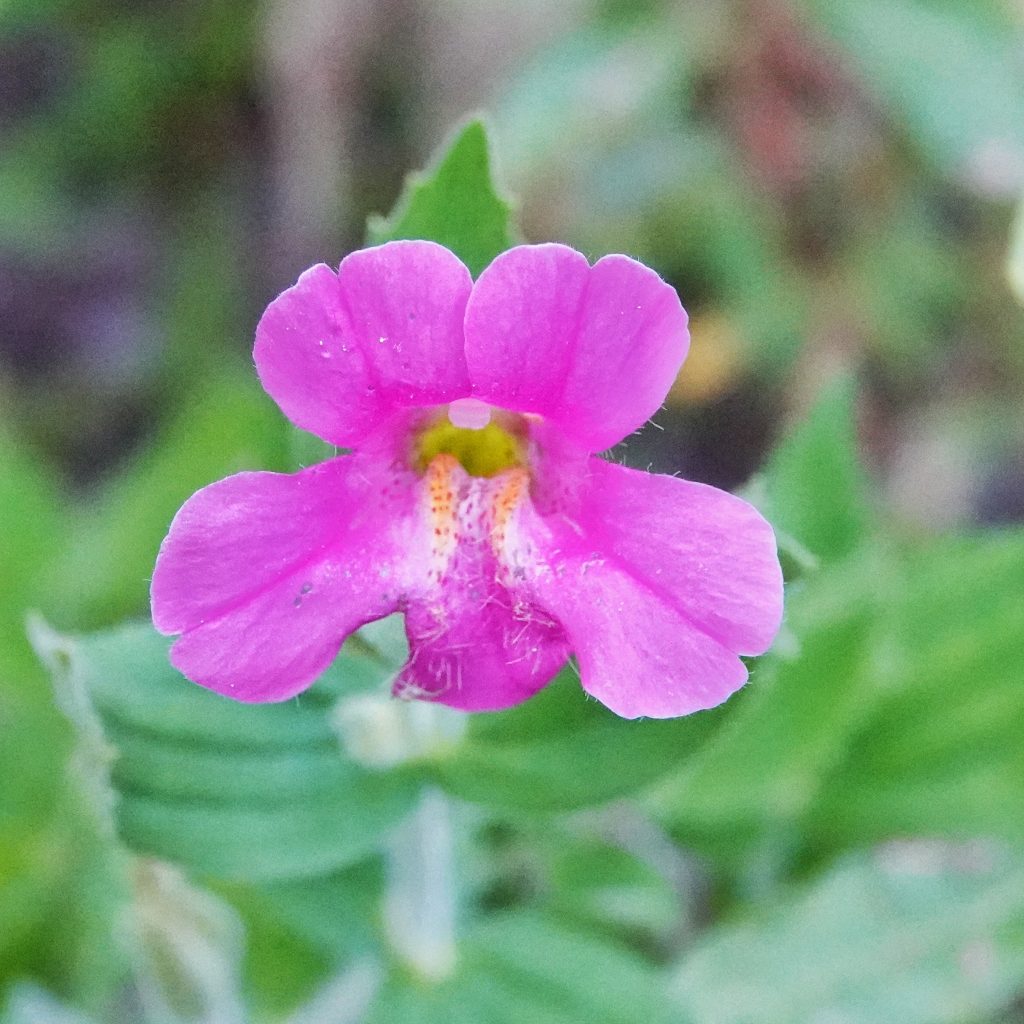
Similar species–Erythranthe cardinalis flowers tend to be much redder, with lateral lobes reflexed, and stigmas and anthers exserted; E. breweri has much smaller flowers (5-10mm wide). Diplacus sp. have flowers that are sessile, or on very short (<the calyx) pedicels.
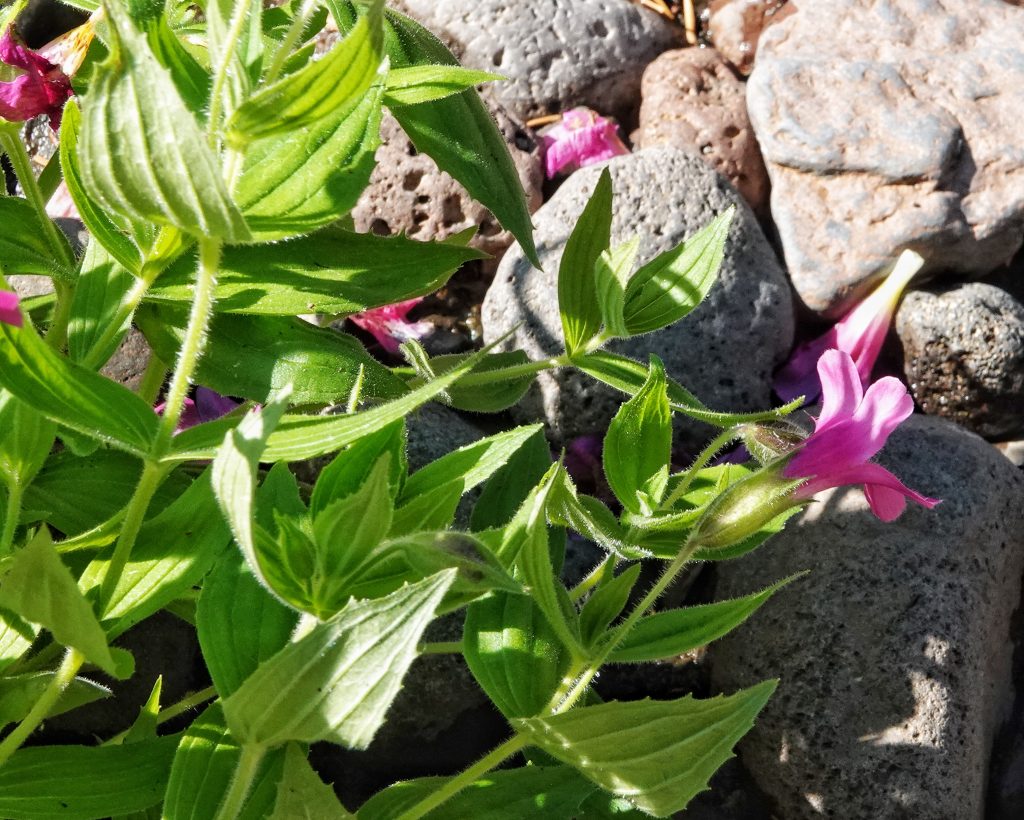
Habitat– Moist ground along watercourses and in wet meadows in montane areas from mid to high elevation; occasionally found along lower elevation streams and rivers.
Range-Western North America; Found in our region in the Cascades, Olympics, and Rocky Mtns, and their associated spur ranges; apparently absent in the Coast Range
Reproductive timing– June into September
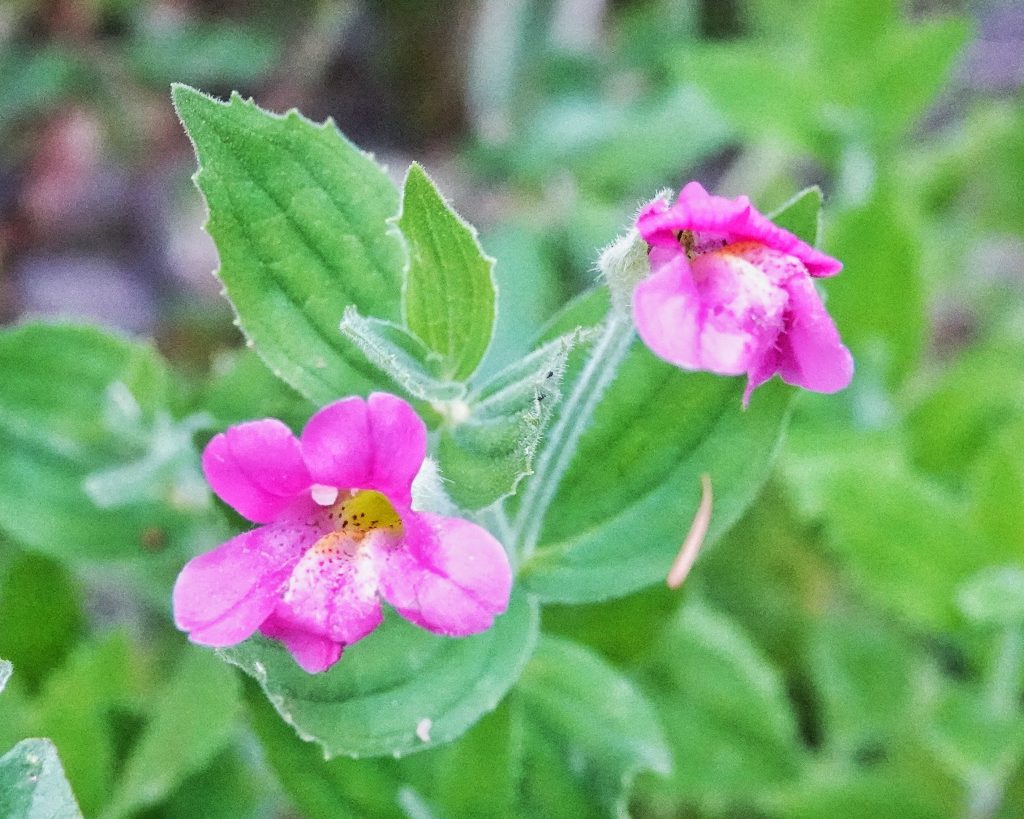
Eaten by– Primarily pollinated by Bumble Bees and Mason Bees, as well as some other species; larvae of Annaphila and Abagrotis moths may feed on this species, as may larvae of chironomid midges in Metriocnemus, since they all utilize other monkeyflowers; probably used as an occasional larval host by the butterflies Euphydryas chalcedona, E. editha, and Phyciodes mylitta.
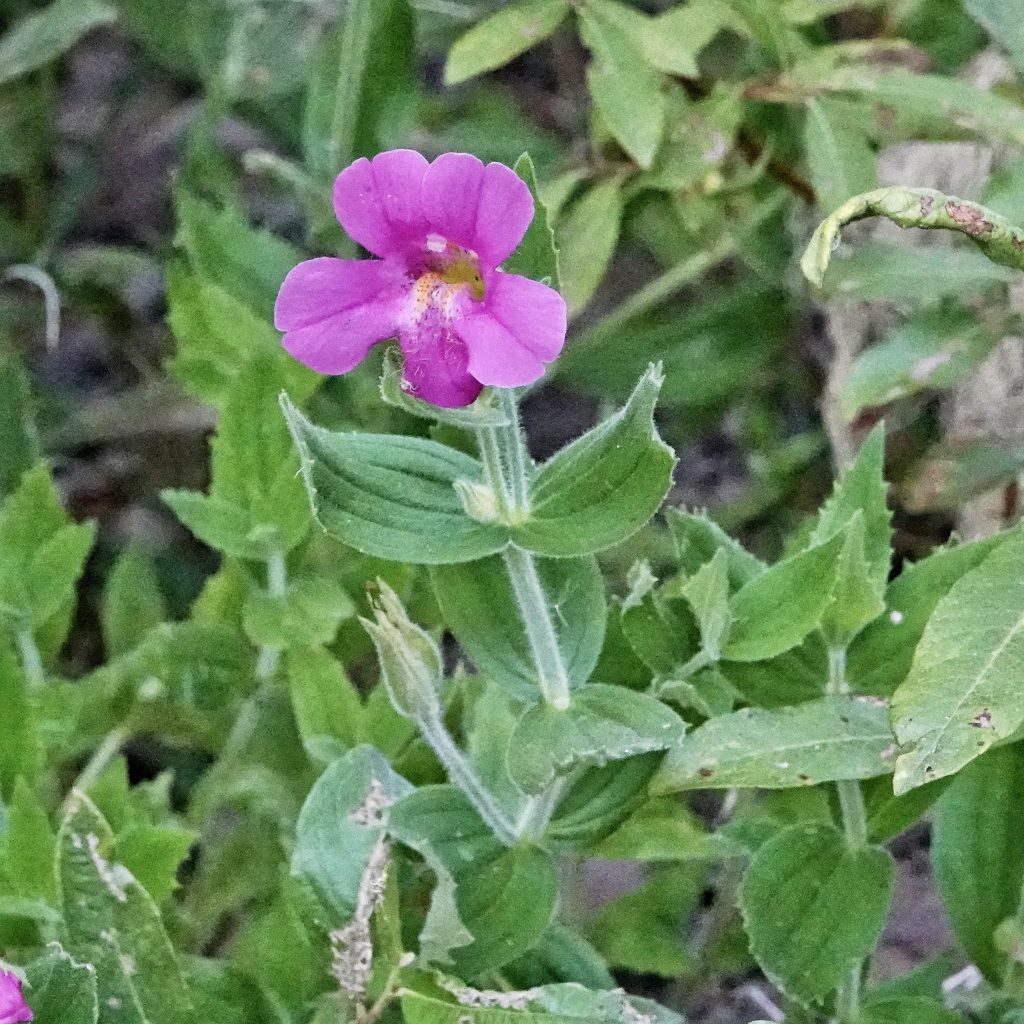
Etymology of names–Erythranthe is from the Greek words for ‘red bloom’, and refers to the color of the flower of the type species, Erythranthe cardinalis. The specific epithet lewisii honors Merriwether Lewis (1774-1809), co-leader of the Corps of Discovery Expedition, which explored the land recently acquired by the US in the Louisiana Purchase.
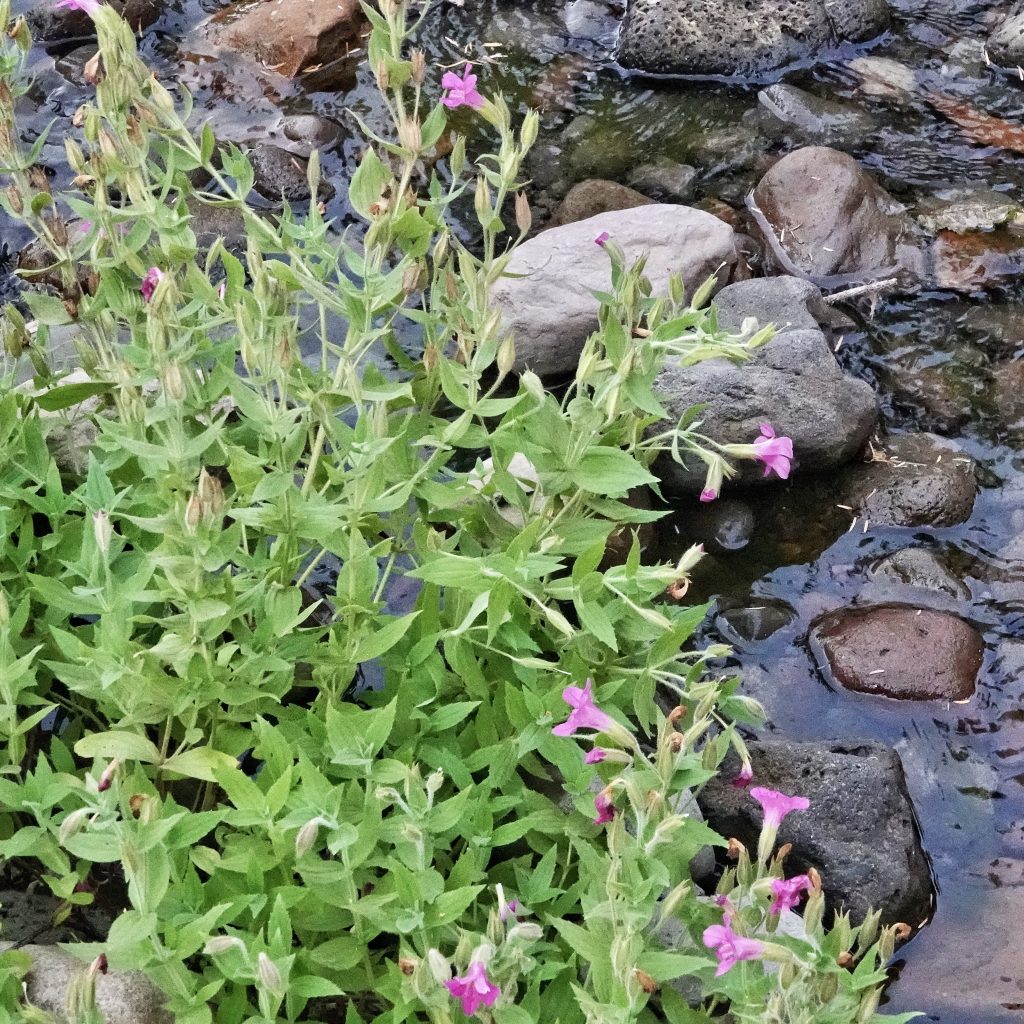
http://beta.floranorthamerica.org/Erythranthe_lewisii
Burke Herbarium Image Collection
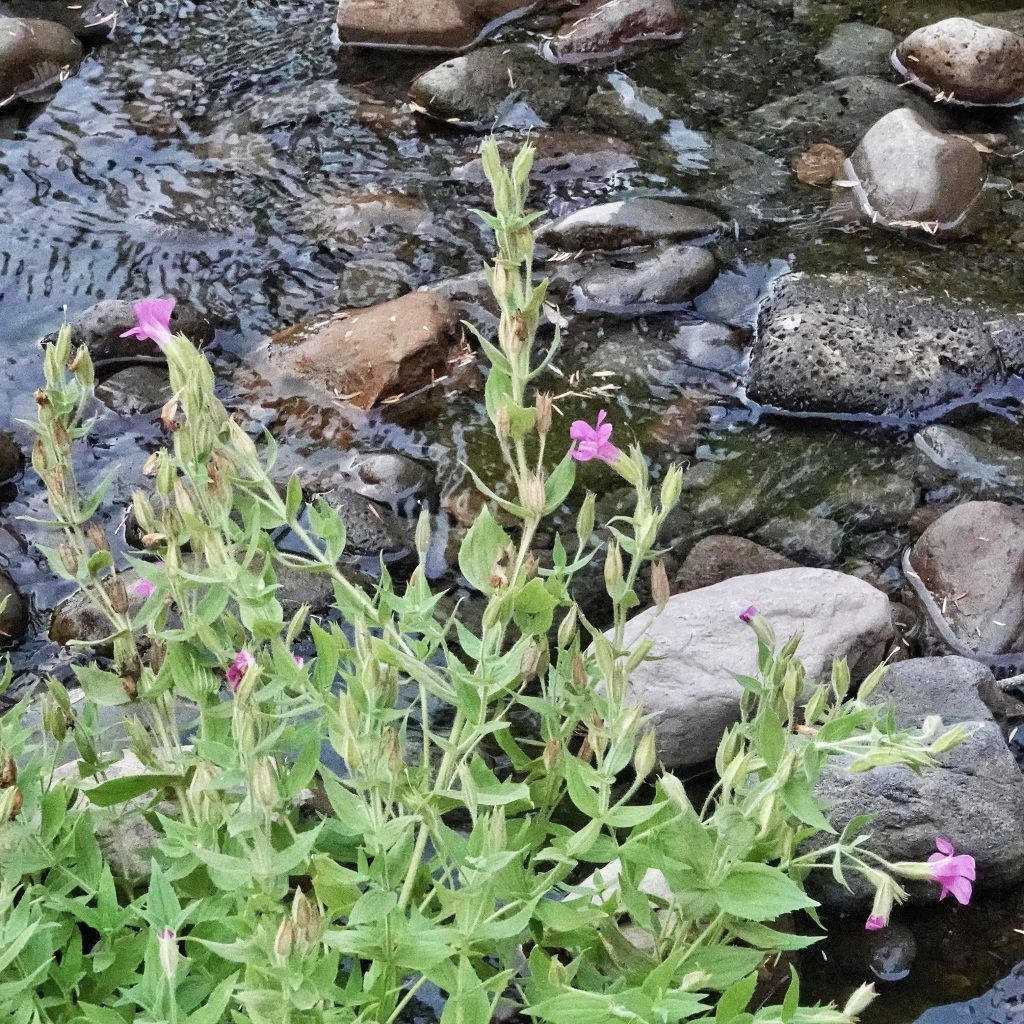
Any sort of monkey business is just fine with me.
That doesn’t surprise me😉😏🤣
I’ve had the exact same experience regarding it’s habitat and it’s always a pleasant surprise when I stumble across this plant. I remember finding it once in a lower elevation area (Salmon Cr. SE of Toledo, WA?), but it was a long time ago and I’m not certain of the location. I suspect that at the time I didn’t realize it was an unusual location for the plant.
While I don’t remember seeing this plant on that Salmon Creek, I do remember when we found dozens of River Jewelwing damselflies there! That was a great day!
Arlene and I had visited that creek a couple times for rockhounding a few (or more) years before you and I visited it. That’s my faltering memory of when I saw it there. Although not “common”, I saw it quite a bit all around the Mt. St. Helens NVM (1990s). It was rarely within the boundaries of our study sites.
I definitely remember the River Jewelwings! I had only seen them in Oregon previous to that location. My first time was at Mt. Pisgah in the 1980s.